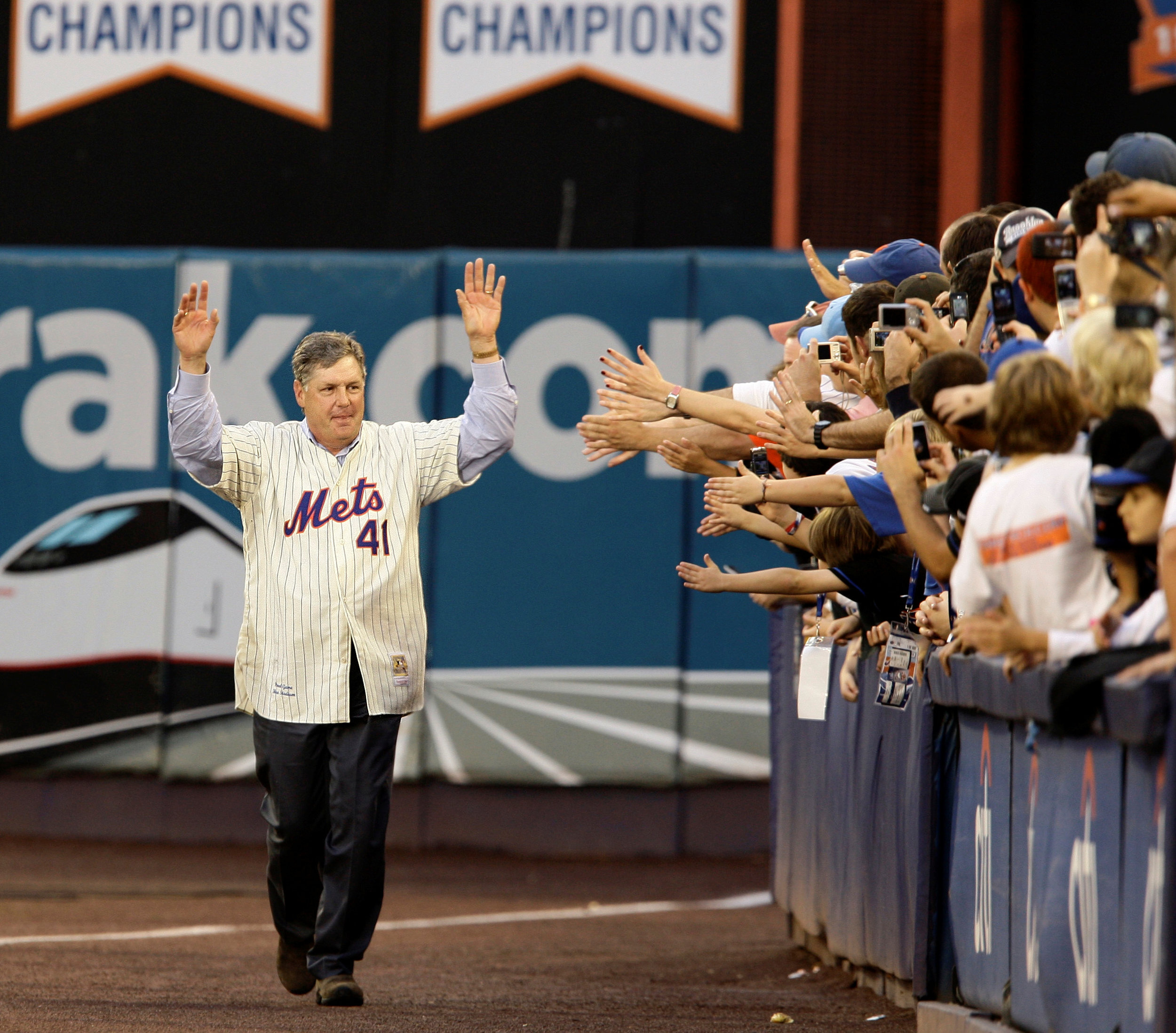To younger fans, Tom Seaver proved the Mets really could be Amazin'
/HALL OF FAME PITCHER TOM SEAVER ACKNOWLEDGES THE FANS AFTER THE FINAL GAME AT SHEA STADIUM IN 2008. AP PHOTO/KATHY WILLENS, FILE.
By David Brand
I never saw Tom Seaver pitch live. I was born a year after he retired, a year after the Mets last won a World Series.
But to millennial Mets fans like me, Seaver still meant something special.
He was the best pitcher in New York City history. And he was a Met. The cap on his Hall of Fame plaque proved it.
He was a Met, and the number 41 plastered on the left field wall at Shea Stadium proved it.
He was a Met, and the 1969 Championship banner proved it.
Seaver spent time in the Mets booth when I was growing up, the talisman of past Mets glory and a reminder of what the club could achieve, even if they happened to be so numbingly frustrating or so doomed to fail.
Shortly after news broke of Seaver’s death Wednesday night, Mets radio announcer Howie Rose called in to WCBS 880 to talk about what The Franchise meant to fans who watched him dominate in the 1960s and 70s.
Rose, devastated by the loss of his friend and icon, recounted his most memorable day at a ballpark: July 9, 1969, Tom Seaver’s Imperfect Game at Shea.
It was Howie’s dad’s birthday and the first big series in Mets history, one in which they hosted, and defeated, the division-leading Cubs on their way to the club’s first-ever title following seven years of abominable baseball.
Seaver set down 25 straight batters before giving up a hit in the top of the 9th. He even stepped into the batter’s box in the bottom of the 8th to lay down a clean sacrifice bunt before walking back to the dugout to prepare for the final inning.
The roar of the crowd as Seaver stepped to the plate was unlike anything ever before heard at Shea Stadium, Howie recalled.
“It was the day the Mets got bar mitzvahed,” Howie said.
Hearing about the impact Seaver had on Howie Rose, the greatest Mets fan and the voice for generations of supporters, was something special.
That game was a turning point in the history of the young club — a day and a season to cherish forever. For younger fans, it was something we could turn to for comfort in dark times.
I grew up in New Jersey surrounded by Yankees fans, including most of my family. The late 90s and early 2000s were a tough time to be the lone Mets fan in Yankeeland — especially as a 13-year-old during the 2000 Subway Series. Yet 1969 and Seaver’s era-defining greatness gave me a history to embrace.
Fifty-one years after the Mets’ first World Series and 37 years after he last pitched for the club, his legacy lives on in the name of the club’s home address, 41 Seaver Way, in the memories of those who watched him and as a reminder to younger fans that, yes, the Mets really could be Amazin’.
David Brand is editor of the Queens Daily Eagle and a lifelong Mets fan - a solo endeavor during his childhood in New Jersey.
Footnote: Yes, Seaver was the best pitcher in New York City history.
Sandy Koufax? He spent most of his career in LA. Christy Mathewson? He pitched when nine home runs led the league. Whitey Ford? Gimme a break.




